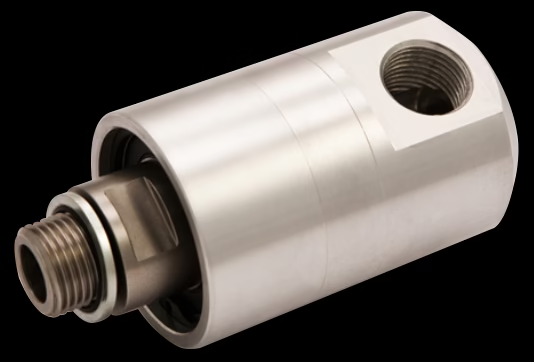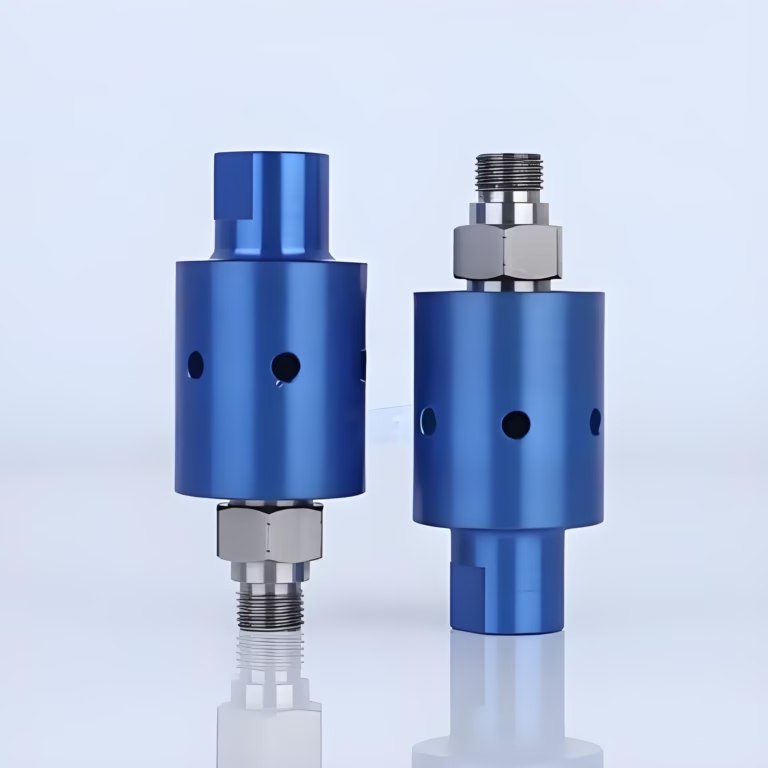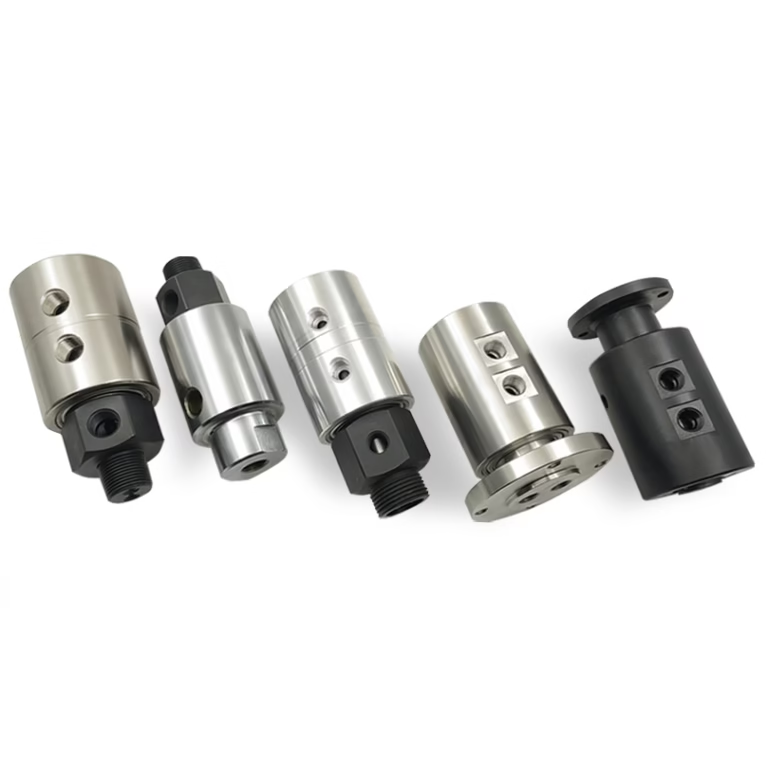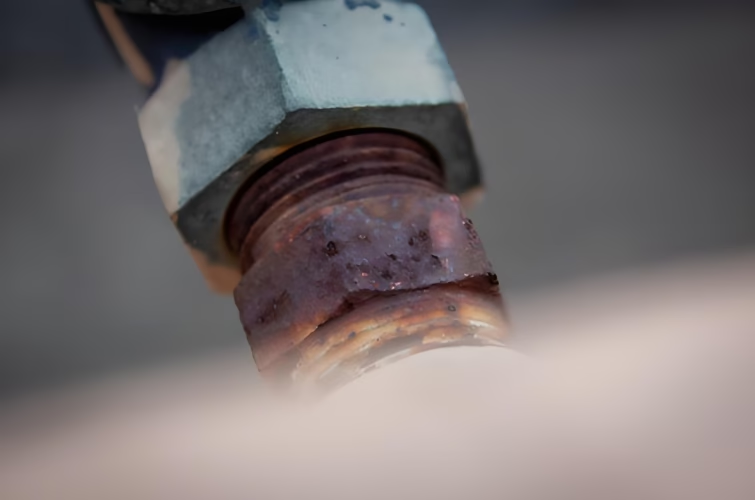What are the different types of rotary unions
Introduction
In the intricate landscape of industrial machinery and fluid transfer systems, types of rotary unions stand as indispensable components. These devices enable the seamless transmission of fluids, such as steam, water, hydraulic oil, and air, between stationary and rotating components.
From manufacturing plants to power generation facilities, understanding the various types of rotary unions is crucial for optimizing system performance, ensuring operational efficiency, and minimizing maintenance costs. In this in-depth blog post, we will explore the different categories of rotary unions, their unique features, applications, and selection criteria.
Single-Passage Rotary Unions
1.1 Basic Structure and Function
Single-passage rotary unions, as the name suggests, feature a single fluid passage. They are the simplest and most commonly used type, to transfer one type of fluid between stationary and rotating parts. The structure typically includes a housing, a rotating shaft, a sealing mechanism, and bearings. The fluid enters through an inlet port in the housing, travels through the passage in the rotating shaft, and exits through an outlet port.
1.2 Applications
These rotary unions find widespread use in various industries. For example, in a paper mill, they supply steam to drying cylinders. In a textile machine, they transfer hot water or steam for fabric treatment processes. They are also commonly in hydraulic systems for transferring hydraulic oil to rotating actuators, such as those in excavators or robotic arms.
1.3 Advantages
Simplicity:
Their straightforward design makes them easy to install and maintain.
Cost – Cost-Effectiveness:
They are generally more affordable compared to multi-passage rotary unions.
Reliability:
With fewer components, there are fewer potential points of failure, leading to higher reliability in many applications.
Multi-Passage Rotary Unions
2.1 Structure and Design
Multi-passage rotary unions are for handling multiple fluids or different flow paths simultaneously. They feature two or more independent fluid passages within a single unit, allowing for the transfer of different media or the separation of inlet and outlet flows. The internal structure is more complex, with each passage isolated from the others to prevent cross-contamination.
2.2 Applications
These rotary unions are essential in applications where multiple fluids need to be transferred to a rotating component. For instance, in a chemical processing plant, they can transfer different chemicals to a rotating reactor. In a printing press, they may handle both cooling water and compressed air for different functions. They are also in some advanced manufacturing processes, such as 3D printing systems that require the delivery of multiple materials to a rotating print head.
2.3 Advantages
Efficiency:
By combining multiple fluid passages into one unit, they reduce the need for multiple rotary unions, saving space and simplifying the system design.
Flexibility:
They can handle different types of fluids or multiple flow paths, making them suitable for complex applications.
Precision:
In applications where precise control of multiple fluids is required, multi-passage rotary unions offer better synchronization and accuracy.
High-Speed Rotary Unions
3.1 Design Considerations for High-Speed Operation
High-speed rotary unions are specifically engineered to operate at elevated rotational speeds. They require special design features to ensure stability and prevent premature wear. These include precision-balanced rotating components to minimize vibration, high-quality bearings capable of withstanding the increased centrifugal forces, and advanced sealing technologies to maintain effective sealing at high speeds.
3.2 Applications
They are commonly in industries such as aerospace, where they may be used in turbine testing equipment or high-speed rotating components of aircraft engines. In the automotive industry, they in high-speed rotating machinery for engine balancing or transmission testing. They are also in some manufacturing processes, such as high-speed machining centers, where coolant or lubricant needs deliverey to the rotating tool at high speeds.
3.3 Advantages
Stability:
They can maintain stable operation even at high rotational speeds, reducing the risk of vibration-related failures.
Longevity:
The specialized design and high-quality components extend their service life, even under demanding high-speed conditions.
Performance:
They enable the efficient transfer of fluids in high-speed applications, ensuring optimal performance of the equipment.
High-pressure Rotary Unions
4.1 Features for Withstanding High Pressure
High-pressure rotary unions handle fluids at elevated pressures. They typically have robust housings made from high-strength materials, such as forged steel or alloy. The sealing mechanisms to maintain a tight seal under high pressure often use reinforced seals or multiple sealing stages. The internal passages also minimize pressure drop and ensure smooth fluid flow.
4.2 Applications
These rotary unions are crucial in industries such as oil and gas, where they in high-pressure hydraulic systems for drilling equipment or pipeline maintenance. In the manufacturing sector, they in high-pressure water jet cutting machines, where they need to deliver water at pressures of thousands of pounds per square inch. They are also used in some power generation applications, such as high-pressure steam systems.
4.3 Advantages
Safety:
They are for safely containing high-pressure fluids, reducing the risk of leaks or catastrophic failures.
Reliability:
The robust construction ensures reliable operation under high-pressure conditions, minimizing downtime.
Compatibility:
They can handle a wide range of high-pressure fluids, making them versatile for different applications.
High-Temperature Rotary Unions
5.1 Materials and Design for High-Temperature Environments
High-temperature rotary unions operate in extreme heat conditions. They use materials that can withstand high temperatures without deforming or losing their sealing properties, such as heat-resistant alloys, ceramic components, or specialized high-temperature polymers. The design also takes into account thermal expansion and contraction to ensure that the components remain functional and sealed at elevated temperatures.
5.2 Applications
They are commonly in industries such as steel manufacturing, where they transfer cooling water or steam to high-temperature processing equipment, such as rolling mills or furnaces. In the glass industry, they in machinery that handles molten glass, where temperatures can exceed 1000°C. They are in some chemical processing applications involving high-temperature reactions.
5.3 Advantages
Heat Resistance:
They can maintain their integrity and functionality in extreme heat, ensuring continuous operation in high-temperature environments.
Durability:
The use of high-temperature materials extends their lifespan, reducing the need for frequent replacements.
Performance:
They enable the efficient transfer of fluids in high-temperature applications, supporting critical industrial processes.
Pneumatic Rotary Unions
6.1 Function and Design for Air Transfer
Pneumatic rotary unions are specifically for the transfer of compressed air. They typically have a simple design with optimized internal passages to minimize air resistance and pressure drop. The sealing mechanisms are focused on preventing air leaks, which can be particularly important in applications where precise air pressure control is required.
6.2 Applications
They are widely in pneumatic systems across various industries. For example, in automation systems, they transfer compressed air to rotating grippers or actuators in robotic arms. In packaging machinery, they enable the operation of pneumatic cylinders for sealing or cutting processes. They are also in some medical devices, such as dental drills, where compressed air to power the rotating components.
6.3 Advantages
Efficiency:
They are optimized for air transfer, ensuring minimal pressure loss and efficient operation of pneumatic systems.
Precision:
The tight sealing prevents air leaks, allowing for precise control of air pressure and flow in applications.
Compatibility:
They are compatible with a wide range of pneumatic components and systems, making them easy to integrate into existing setups.
Hydraulic Rotary Unions
7.1 Features for Hydraulic Fluid Transfer
Hydraulic rotary unions handle the high-pressure transfer of hydraulic fluids. They have robust construction to withstand the forces associated with hydraulic systems and prevent fluid leakage, which can be critical in maintaining system efficiency. The seals are typically designed to handle the viscosity of hydraulic fluids and the high pressures involved.
7.2 Applications
They are commonly in hydraulic systems in heavy machinery, such as excavators, cranes, and forklifts, where they transfer hydraulic fluid to rotating components, such as the boom or steering mechanisms. In industrial manufacturing, they are in hydraulic presses and forming machines. They are also in some aerospace applications, such as hydraulic systems in aircraft landing gear.
7.3 Advantages
High-pressure – Pressure Handling:
They can safely and efficiently handle the high pressures typical of hydraulic systems.
Reliability:
The robust design and sealing mechanisms ensure reliable operation in demanding hydraulic applications.
Performance:
They enable the smooth transfer of hydraulic fluid, supporting precise control and movement in hydraulic systems.
Water Rotary Unions
8.1 Design for Water Applications
Water rotary unions are specifically tailored for the transfer of water. They are designed to prevent corrosion, which can be a significant water issue, especially if it contains impurities. The materials used are often corrosion-resistant, such as stainless steel or brass. The sealing mechanisms are optimized to prevent water leakage, which can be particularly important in applications where water damage could occur.
8.2 Applications
They are used in a wide range of applications, including cooling systems in industrial machinery, where they transfer water to cool hot components. In water-jet cutting machines, they deliver high-pressure water to the cutting nozzle. They are also used in some agricultural equipment, such as irrigation systems with rotating sprinklers.
8.3 Advantages
Corrosion Resistance:
The use of corrosion-resistant materials ensures a longer lifespan in water applications.
Leak Prevention:
The optimized sealing mechanisms minimize the risk of water leakage, protecting surrounding equipment.
Versatility:
They can handle different types of water, including clean water, wastewater, and even water with some impurities, making them suitable for a variety of applications.
Steam Rotary Unions
9.1 Adaptations for Steam Transfer
Steam rotary unions handle the unique challenges of steam transfer, including high temperature, high pressure, and the potential for condensation. They often use materials that can withstand high temperatures, such as alloy steels, and sealing mechanisms that can maintain a tight seal under steam conditions. Some steam rotary unions also include features to handle condensate, such as drainage ports.
9.2 Applications
They are in industries such as paper manufacturing, where steam to dry paper on rotating cylinders. In food processing, they transfer steam to cooking or sterilization equipment. They are also in some power generation applications, such as steam turbines.
9.3 Advantages
High-temperature and Pressure Resistance:
They can safely and effectively handle steam at high temperatures and pressures.
Condensate Management:
The features for handling condensate help to ensure efficient steam transfer and prevent damage to the equipment.
Reliability:
They are designed to operate reliably in steam applications, minimizing downtime and maintenance requirements.
Custom-Designed Rotary Unions
10.1 Need for Custom Solutions
In some cases, standard rotary unions may not meet the specific requirements of an application. This could be due to unique operating conditions, such as extremely high temperatures or pressures, or specific design constraints, such as limited space or unusual mounting requirements. In such situations, custom – designed rotary unions are necessary.
10.2 Design Process
The design process for custom rotary unions typically involves close collaboration between the manufacturer and the customer. The manufacturer will work with the customer to understand the specific requirements, including the type of fluid, operating conditions, space limitations, and any other unique factors. Based on this information, the manufacturer will design a custom rotary union that meets all the specified requirements.
10.3 Applications
Custom-designed rotary unions are used in a wide range of specialized applications. For example, in the aerospace industry, they may be used in unique testing equipment or aircraft systems with specific requirements. In research and development, they may be used in experimental machinery or prototypes. They are also used in some niche manufacturing processes that require specialized fluid transfer solutions.
10.4 Advantages
Tailored to Specific Needs:
Custom rotary unions are designed to precisely meet the requirements of the application, ensuring optimal performance.
Compatibility:
They are designed to work seamlessly with the existing system, minimizing integration issues.
Innovation:
The custom design process allows for the incorporation of new technologies or features, enabling innovation in specialized applications.
Selection Criteria for Rotary Unions
When selecting a rotary union, several factors need to be considered to ensure the right choice for the application:
Fluid Type
The type of fluid being transferred is a critical consideration. Different fluids have different properties, such as viscosity, temperature, and chemical reactivity, which can affect the choice of materials and sealing mechanisms. For example, corrosive fluids require materials that are resistant to corrosion, while high – temperature fluids need materials that can withstand the heat.
Operating Conditions
The operating conditions, including pressure, temperature, and rotational speed, play a significant role in determining the appropriate rotary union. High-pressure applications require rotary unions with robust construction and sealing mechanisms capable of withstanding the pressure. Similarly, high-temperature applications need unions designed for heat resistance, and high-speed applications require unions optimized for stability at elevated speeds.
Number of Passages
The number of fluid passages required depends on the application. Single – passage rotary unions are suitable for applications where only one fluid needs to be transferred. Multi – passage rotary unions are necessary when multiple fluids or different flow paths are required.
Size and Mounting Requirements
The physical size of the rotary union and the mounting requirements are important considerations, especially in applications where space is limited. The union must be able to fit into the available space and be mounted securely to ensure proper operation.
Maintenance and Serviceability
The ease of maintenance and the availability of spare parts are also important factors. Rotary unions that are easy to maintain and have readily available spare parts can reduce downtime and maintenance costs.
Conclusion
Rotary unions come in a wide variety of types, each designed to meet specific requirements and applications. From single-passage unions for simple fluid transfer to custom-designed solutions for specialized applications, understanding the different types and their features is essential for selecting the right rotary union for any given task.
By considering factors such as fluid type, operating conditions, number of passages, size, and maintenance requirements, industries can ensure optimal performance, efficiency, and reliability in their fluid transfer systems. As technology continues to advance, the development of new and improved rotary unions will further enhance their capabilities and applications across various sectors.







